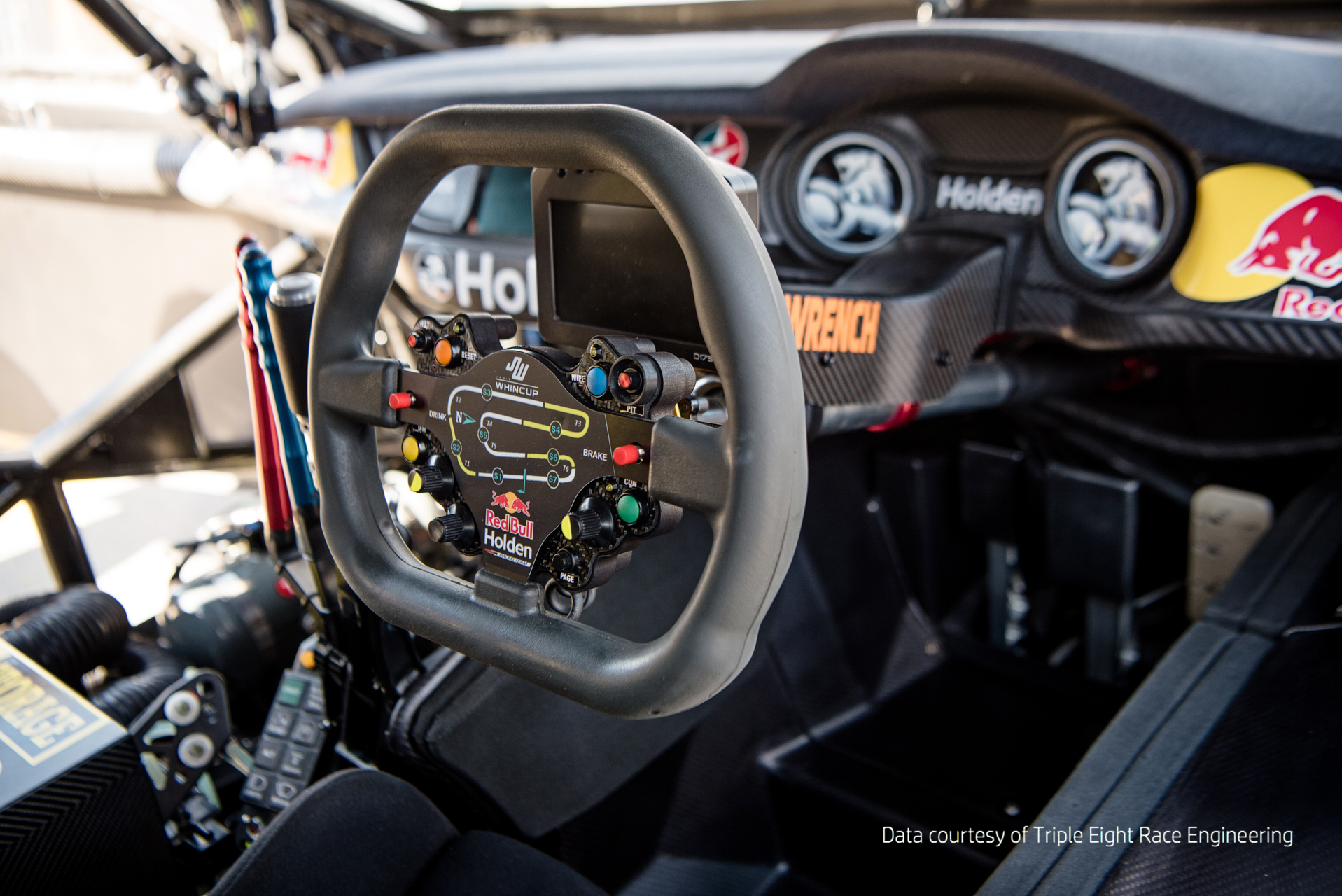Triple Eight Race Engineering, an Australian motor racing team, is using 3D printing technology from HP to produce customized parts for its race cars.
In partnership with EVOK3D, an Australia-based 3D printing solutions provider, Triple Eight has been able to use HP Multi Jet Fusion (MJF) technology to 3D print a number of parts for a race car steering wheel. In doing so, the designers were able to customize the wheel according to the driver, as well as optimize its weight, accelerate production time, and decrease costs.

Enhancing race car steering wheel manufacturing
Triple Eight is the Red Bull Holden racing team competing in the Virgin Australian Supercars Championship, Australia’s premier motorsport category. The team has been victorious in the Supercars Championship a total of eight times, and the Bathurst 1000 seven times.
In early 2017, EVOK3D gave Triple Eight’s workshop a visit in order to showcase parts manufactured with HP MJF technology. EVOK3D is a certified HP 3D printer reseller for Australia. The company has helped HP to sell its 3D printers to firms like iOrthotics, a Brisbane-based manufacturer of custom orthotics.
In response to the HP MJF 3D printed components, Mark Dutton, Team Manager at Triple Eight, stated that “We were blown away with the part quality and strength, compared to what we were used to.”
“We realised we needed to have access to this technology to improve a whole host of components.”
From the positive response, a broader discussion with HP commenced, resulting in a partnership between the three firms to begin 3D printing parts for Triple Eight. The team worked with HP and EVOK3D to manufacture three main pieces for the race car steering wheel. This included a two-part mold to form the soft polyurethane exterior that wraps around and cushions the steering wheel; lightweight cores that form the bulk of the steering wheel rim; and the housing for the mounting of switchgear and lights to the hub.
These parts were selected for 3D printing by Triple Eight as the company wanted to make these components lighter, and customize it to the driver, so as to improve the vehicle’s ergonomics. The steering wheel grip was therefore designed according to the driver’s anatomy, enabling increased control of the vehicle with precise steering inputs, and enhanced comfort. Additionally, 3D printing sped up the total production time of the wheel’s parts.

HP and automotive
HP’s recent activity in additive manufacturing has increasingly drawn attention to the application of 3D printing for the automotive sector. At Formnext 2019, the company showcased how HP 3D printing is in use at major manufacturers and engineering companies. This revolved around the exhibition of 3D printed components designed for two leading automotive industry suppliers: a topology-optimized active coolant distributor for electric vehicles developed by automotive development partner EDAG, and a new seat headrest from Adient, a global leader in automotive seating.
Additionally, Volkswagen recently announced that HP Metal Jet is meeting milestones for its ongoing introduction into vehicle manufacture. At least 10,000 metal parts have been produced by Volkswagen, using the HP Metal Jet System. Speaking to 3D Printing Industry on the trends to watch in 2020, Tim Weber, Global Head of 3D Metals predicts electric vehicles to be a key area for additive manufacturing: “3D printing’s impact on electric vehicle production will be massive in the years ahead. The light-weighting of parts combined with the fast prototyping and production capabilities of 3D printing will create the perfect match allowing automakers and manufacturers to produce large volumes of car parts that were previously impossible to create. We expect that automakers will accelerate their electric vehicle roadmaps using both metal and plastic 3D printing.”
The nominations for the 2020 3D Printing Industry Awards are now open. Who do you think should make the shortlists for this year’s show? Have your say now.
Subscribe to the 3D Printing Industry newsletter for the latest news in additive manufacturing. You can also stay connected by following us on Twitter and liking us on Facebook.
Looking for a career in additive manufacturing? Visit 3D Printing Jobs for a selection of roles in the industry.
Featured image shows a steering wheel with 3D printed parts. Photo via Triple Eight Race Engineering.


